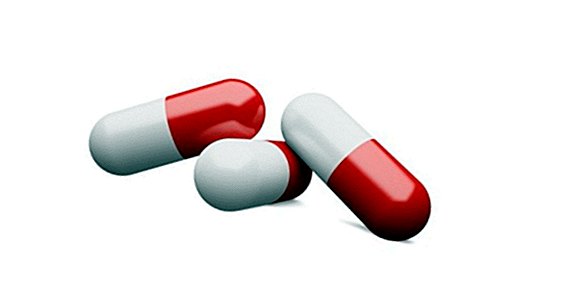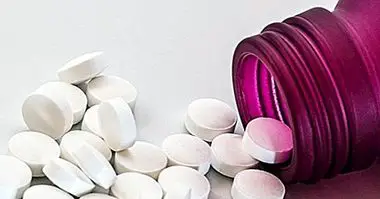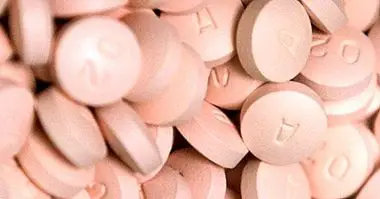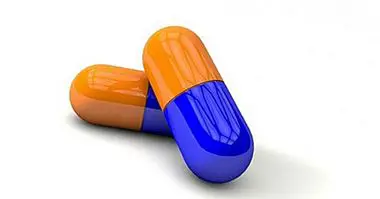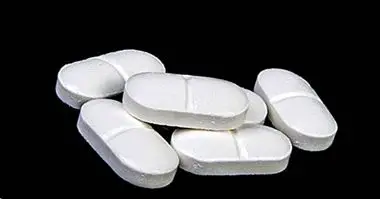Iproniazide: uses and side effects of this psychopharmaceutical
Depression is a mental health problem that has accompanied the human being throughout history. Already in ancient Greece it was spoken of melancholy as a disease with characteristics similar to what we would today consider depression, with a sad and anhedonic mood. Being also currently one of the most prevalent disorders worldwide, the search for an effective treatment has generated a great interest over time and has become an increasingly pressing need.
There are various methods used to treat this condition, including psychopharmacology. One of the first drugs that were found and synthesized was iproniazide , which we will discuss throughout this article.
- Related article: "Types of psychotropic drugs: uses and side effects"
Iproniazide: the first MAOI
Iproniazide is a psychotropic drug classified as an antidepressant that also has great importance at the historical level. And it is one of the first antidepressants synthesized, along with substances such as imipramine.
His discovery was actually casual, by serendipity , given that its synthesis was aimed at finding a drug that would be effective against tuberculosis. In the trials with patients with tuberculosis, it was observed that it had a mood-elevating effect, something that over time would be analyzed and applied to the population with depressive disorders (specifically, its use would be approved in 1958).
This medicine is part of the group of inhibitors of monoamine oxidase or MAOIs, which affect the nervous system by blocking the metabolism of certain neurotransmitters. Iproniazide is indeedthe first of the commercialized MAOIs and it was along with other substances derived from it one of the treatments of choice for patients with depression. Its action occurs in a non-specific and irreversible way, with its effects continued for at least fifteen days.
At the level of effects, its application generates an increase in mood and activation, being effective in the treatment of depressive symptomatology and decreasing the inactivity and passivity of those who use it.
However, the observation of the existence of strong side effects that put at risk the health of those who consumed it, among which severe liver problems and the promotion of high blood pressure to dangerous levels , and the generation of new drugs that do not pose so much risk have meant that MAOIs and especially the first or classic ones are displaced and used only when other drugs fail. In the case of the iproniazide in question, at present it has stopped being commercialized since it has a great danger in toxicity level, being able to be found only in some countries.
- Maybe it interests you: "Are there several types of depression?"
Mechanism of action
Iproniazide is, as we have said, a monoamine oxidase inhibitor or non-selective irreversible type IMAO. As an MAOI it exerts its effects at brain level by inhibiting an enzyme, MAO, whose main function is to degrade monoamines by oxidation in order to eliminate excess neurotransmitters generated by monoaminergic neurons (which are those that generate dopamine, noradrenaline and serotonin) in the synaptic space as well as tyramine.
Thus, inhibiting the monoamine oxidase would not produce said destruction of monoamines, so that the levels of serotonin, noradrenaline and dopamine will increase in the brain. The action of iproniazide, then, would be essentially of agonist type with respect to monoamines, favoring its action. This will generate an improvement of the depressive symptomatology by increasing neurotransmitters that in major depression are diminished.
It must be borne in mind that there are two types of monoamine oxidase: MAO A and MAO B. The first is linked and is responsible for metabolizing and destroying the excess of noradrenaline, serotonin and tyramine, the first two being the substances most linked to the depression. The MAO B does the same with dopamine, also influencing the same as the previous one in tyramine.
The fact that it is considered irreversible and non-selective implies that iproniazide acts on all types of MAO, in such a way that it's not just that the monoamine oxidase is reduced but it is completely destroyed from our brain until it returns to synthesize more (something that can take around fifteen days). But the truth is that the enzyme in question is useful to the brain, and the increase in neurotransmitters it generates (especially in the case of tyramine and noradrenaline) can have dangerous effects on health.
Main indications
Iproniazide is a drug that is not currently marketed due to the high level of risk involved at the level of toxicity at the liver level and the existence of much safer drugs with fewer side effects.
But nevertheless, The main indication for this drug was in cases of major depression , being effective in the treatment of symptoms at the level of mood (which contributed to increase) and anhedonia and feeling of fatigue. Likewise, it has also occasionally been used for the purpose for which it was initially thought: the treatment of tuberculosis.
Side effects, contraindications and risks
Iproniazide is a drug that has great utility in the treatment of depressive symptoms, but as we have said has been withdrawn from the market due to its high level of risk and the side effects it has. In this sense, some of the most well-known side effects of iproniazide, which it actually shares with some other IMAOS, are as follows.
In the first place and one of the main reasons for its withdrawal is the high level of toxicity that this drug can have for the liver . Likewise, another of the possible side effects that presents the greatest risk is the appearance of severe hypertensive crises due to their interaction with a large number of foods rich in proteins, which can even contribute to the appearance of strokes or heart problems. vascular with deadly potential.
It can also cause kidney problems. Other less serious symptoms are the appearance of insomnia, weight gain and difficulties or inability to achieve orgasm, delayed ejaculation or decreased libido.
All this means that there are certain types of population that have totally contraindicated this medication. In this sense, all those people who suffer from some type of pathology or liver damage, as well as those with heart disease or kidney problems, stand out. People who require a hyperproteic diet also have it highly contraindicated . People with diabetes and celiac should not take this drug either. Iproniazide and other MAOIs have a high level of interaction with other drugs, its use being contraindicated with other antidepressants and other drugs.
Bibliographic references:
- Manzanares, J. and Pita, E. (1992), Antidepressant drugs. Rev. Asoc. Esp. Neuropsiq., 13 (Suppl 1).
- López-Muñoz, F. and Álamo, C. (2007). History of psychopharmacology. The revolution of psychopharmacology: on the discovery and development of psychotropic drugs. Volume II. Madrid. Editorial Panamericana Medical.
- Salazar, M .; Peralta, C .; Pastor, J. (2011). Manual of Psychopharmacology. Madrid, Panamericana Medical Publishing House.

